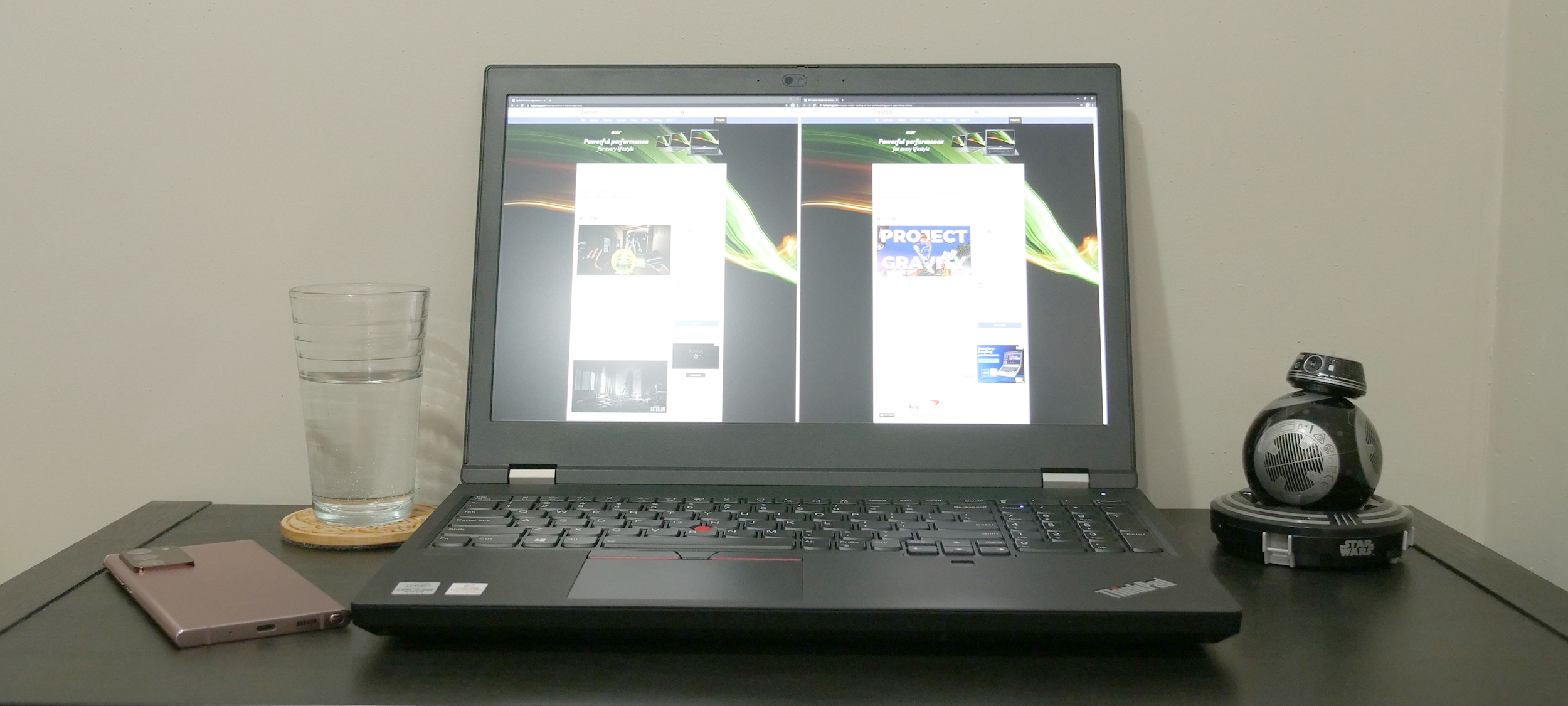Laptop Mag Verdict
The Lenovo ThinkPad P15 delivers massive performance, but it has the price and size to match.
Pros
- +
Stellar performance and graphics
- +
Excellent array of ports
- +
Bright and crisp 4K display
- +
Comfortable typing experience
- +
Durable build
Cons
- -
Weak battery life on 4K model
- -
Fans get loud
- -
Thick and heavy
- -
Expensive
Why you can trust Laptop Mag
Price: $2,449 (starting); $7,879 (reviewed at)
CPU: Intel Core i9-10885H vPro
GPU: Nvidia Quadro RTX 5000 Max-Q
RAM: 32GB
Storage: 1TB SSD
Display: 15.6-inch, 4K UHD
Battery: 3:56
Size: 14.8 x 9.9 x 1.2-inches
Weight: 6.1 pounds
The term desktop replacement gets thrown around too lightly at times, but the Lenovo ThinkPad P15 certainly earns it. That’s not surprising when you see the price ($2,449 starting; tested at $4,570) or the size of this workstation, at 1.2 inches, it’s roughly as thick as any two laptops stacked on top of one another.
Housed inside that expensive and expansive frame are top-of-the-line components, including a 10th Gen Intel Core i9-10885H CPU, Nvidia Quadro RTX 5000 Max-Q GPU and 32GB of RAM, which deliver outstanding performance. Naturally, it doesn’t stop with the internals, the P15 boasts a bright 4K display, a vast array of ports and a comfortable full-size keyboard with a number pad.
While there are a number of standout features for the ThinkPad P15 Gen 1, a few drawbacks might have you giving some of the other best workstations on the market a look.
Lenovo ThinkPad P15 price and configuration options
Workstation pricing can bring tears to the eyes of anyone who needs this level of performance in a mobile form factor. I know this well, but the $7,879 retail price of my ThinkPad P15 Gen 1 review unit still elicited a double-take.
There are a couple of important caveats; one is that my review unit is near the top end of the configuration options with its Intel Core i9-10885H processor, Nvidia Quadro RTX 5000 Max-Q GPU with 16GB of VRAM, 32GB of RAM, a 1TB SSD and a UHD (3840 x 2160) IPS Dolby Vision HDR display. The other caveat is that, as I write this review, my config is available for $4,570 direct from Lenovo and can be found for similar pricing elsewhere online.
The base model starts at $2,449 and includes a 10th Gen Intel Core i5-10400H with vPro, Nvidia Quadro T1000 GPU with 4GB of RAM, 8GB of RAM, a 256GB SSD and an FHD (1920 x 1080) IPS display. That model, as of this writing, can be found for $1,420.42 on Lenovo, so the retail pricing for ThinkPad P15 Gen 1 is pretty much to be ignored.
Lenovo ThinkPad P15 design
Utilitarian is the highest praise I can muster for the ThinkPad P15 Gen 1. It’s a beast of a laptop at 6.1 pounds and 14.8 x 9.9 x 1.2 inches. That is large even by workstation standards and the featureless matte-black chassis doesn’t give off a premium feel. Despite the matte finish, the laptop is an absolute fingerprint magnet and the dark finishes are only broken up by the grey hinges, a small chrome Lenovo logo, and the slightly larger chrome ThinkPad logo that adds the one fun element to the otherwise staid design with a red LED dotting the “i” in ThinkPad.
Sign up to receive The Snapshot, a free special dispatch from Laptop Mag, in your inbox.

For a quick comparison, the ThinkPad P15 is larger than any of its recent competitors like the MSI WS66 10TMT (14.2 x 9.7 x 0.7 inches, 4.6 pounds), the MSI WS65 9TM (14.1 x 9.8 x 0.7 inches, 4.3 pounds) or the Asus ProArt StudioBook 15 (14.2 x 9.9 x 0.8 inches, 4.4 pounds).
As you can see, the ThinkPad P15 Gen 1 is the largest in every dimension, and outweighs the closest competitor by 1.5 pounds. It feels like a bit more effort could have been put into slimming this monster down.
Popping open the lid greets you with a full keyboard with a number pad and a traditional ThinkPad look. Of course, the red eraser (TrackPoint) is present which, along with the red trim on the upper touchpad buttons, gives a little color to the interior of the keyboard. The lettering on the keys is bright white and easily legible with excellent backlighting for dim environments.
The built-in fingerprint sensor is just below the cursor keys and color-matched to the chassis, but slightly recessed so it's easy to find. At the bottom right, you have a large chrome ThinkPad logo mirroring the one found on the lid.
The Lenovo ThinkPad P15 might as well be the image you see in the dictionary when you look up “workstation.” It has a bland design that gets the job done.
Lenovo ThinkPad P15 security and durability
Security is a high priority for business users and the ThinkPad P15 has you covered in this regard.
From a physical security standpoint, there is the IR camera for Windows Hello facial recognition as well as the previously mentioned fingerprint scanner. This should help keep your laptop and files secure without necessitating entering passwords all the time. A Kensington lock is present as well to keep your laptop from being easily snatched.
Turning to the internal security measures, the ThinkPad P15 houses a discrete TPM 2.0 chip to ensure the encryption of your files. An optional Smart Card Reader is also available should that be necessary for your work.
The tank-like build of the ThinkPad P15 is at least slightly justified by its MIL-STD 810G certification, which should allow it to handle a variety of tough environments from drops to shocks and extreme temperatures. The keyboard is also spill-resistant in case a beverage incident should occur.
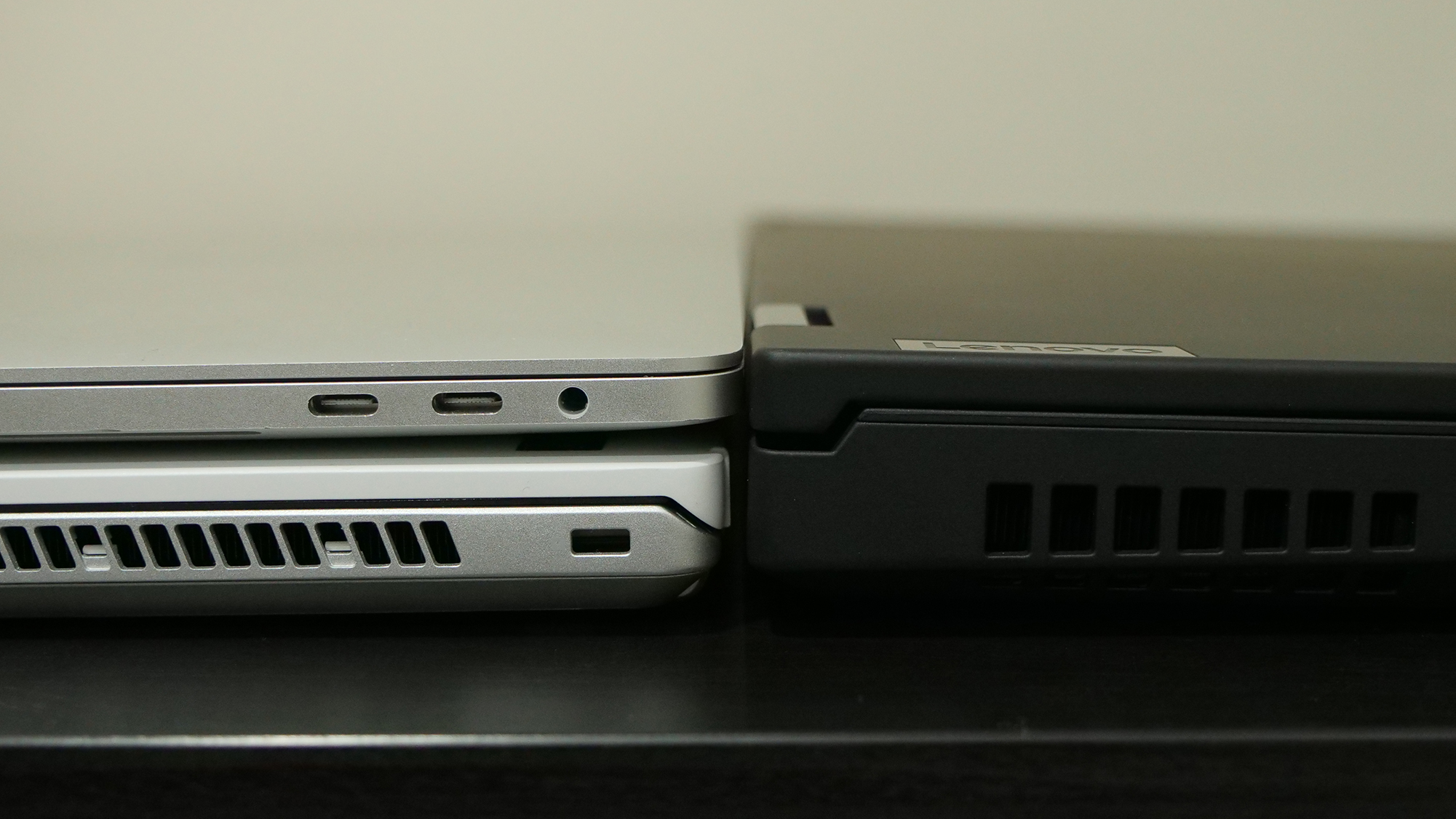
The left side features a security lock slot, one Thunderbolt 4 port and a headphone jack, while the right side holds room for another Thunderbolt 4 port and an HDMI port. This thing desperately needs at least one USB Type-A port.
Lenovo ThinkPad P15 ports
If you were hoping the massive size of this laptop meant a solid array of ports, then you won’t be disappointed. While it doesn’t feature any brand new Thunderbolt 4 ports, it does an otherwise excellent job of covering both legacy and modern connections.

Along its left side you have an HDMI 2.0 port, a USB Type-A 3.2 Gen 1 port (always on), and a combo headphone/mic jack.
The back is where most of the powerful ports can be found, including a power port, two Thunderbolt 3 ports, a USB Type-C 3.1 inputs and an RJ-45 Ethernet port.

Finally, on the right side, you get a Kensington lock port, a second USB Type-A 3.2 port, an SD card reader and an optional Smart Card reader.
That should cover the needs of the vast majority of users, but with USB Type-C ports on the back, you can add a USB Type-C hub to cover any other potential connectivity requirements.
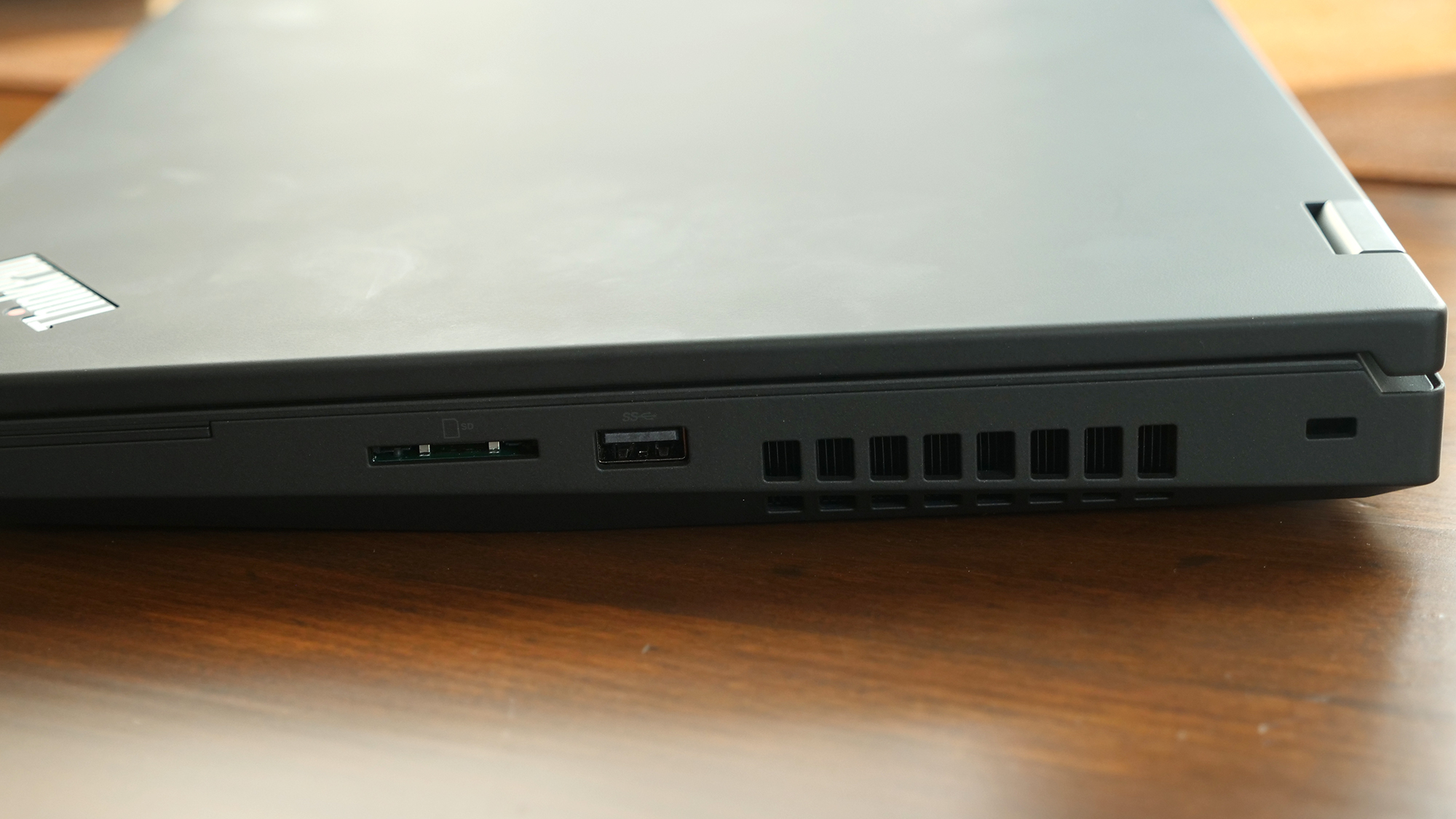
Lenovo ThinkPad P15 display
The ThinkPad P15's 15.6-inch, 4K (3,840 x 2,160-pixel) display offers a sharp and bright image, allowing you to display a wealth of information on the screen if you stick to the native resolution.
My review unit doesn’t feature a touchscreen, but that option is available in the 4K OLED configuration. The bezels on the ThinkPad P15 are almost comically large, making the laptop feel like a throwback to the early 2000s. I’m sure this is the result of needing the physical space to accommodate the full keyboard and number pad, but it seems like a 16-inch panel would have been a better fit.

Watching the 4K trailer for the Mortal Kombat reboot, the ThinkPad P15 Gen 1 display showed its remarkably crisp image and faithful color reproduction; the tracking shot of the crystalline structure taking shape as Sub-Zero formed an ice blade was gloriously detailed. However, the display isn’t as vibrant as some. Having watched the trailer on a Galaxy Note 20 Ultra previously, this was quite a bit more muted, although phone screens tend to be more vivid than those on laptops.
Our colorimeter agreed with me, showing that the panel covers 84% of the DCI-P3 color gamut. That bests the MSI WS66 10TMT (78%), but falls just behind the category average (85.6%) and considerably behind the Asus ProArt StudioBook 15 (121%) and MSI WS65 9TM (178%).
Brightness, on the other hand, was excellent with the Lenovo ThinkPad P15 peaking at 522 nits. That put it well beyond any of its competitors with the MSI WS65 9TM (393 nits) coming closest and the WS66 10TMT (346 nits) and Asus ProArt StudioBook 15 (339 nits) a distant third and fourth.
Lenovo ThinkPad P15 keyboard and touchpad
Typing on the ThinkPad was a very comfortable experience. I’ve been bouncing between mechanical keyboards and extremely low travel options and this fell pleasantly between those. Keys bounced back quickly and provided a nice clicky experience without being overly noisy.
Overall, I found the key spacing was reasonable; but would have loved to see more spacing between the number pad and the rest of the keyboard. However,t I understand there are space constraints fitting all of this into a 15.6-inch laptop. This is most apparent at the bottom-right section of the keyboard where the cursor cluster and other keys are reduced to two-thirds or half size.

When it came to testing my typing speed, I averaged 83 words per minute with 96% accuracy on the 10fastfingers.com typing test, which is just slightly off my current average of 86 wpm. Not having used a ThinkPad recently, it took me about 15 minutes of typing to adjust to the depression surrounding the red TrackPoint nub located at the intersection of the G, H and B keys, but after that, I didn’t have any issues with it.
Turning to the touchpad, the 3.9 x 2.7-inch surface feels a bit small relative to the size of the laptop itself, but it’s perfectly reasonable to use and more than sufficient to carry out Windows 10 gestures. I had no issues with the speed or responsiveness of the touchpad and depressing the left or right side to click was fine, if a bit mushy.
Longtime ThinkPad fans may opt to stick with the aforementioned TrackPoint for navigating around the laptop. My lack of skills with it aside, the rubber nub remains as instantly reactive as ever and can be considerably faster than using the touchpad.
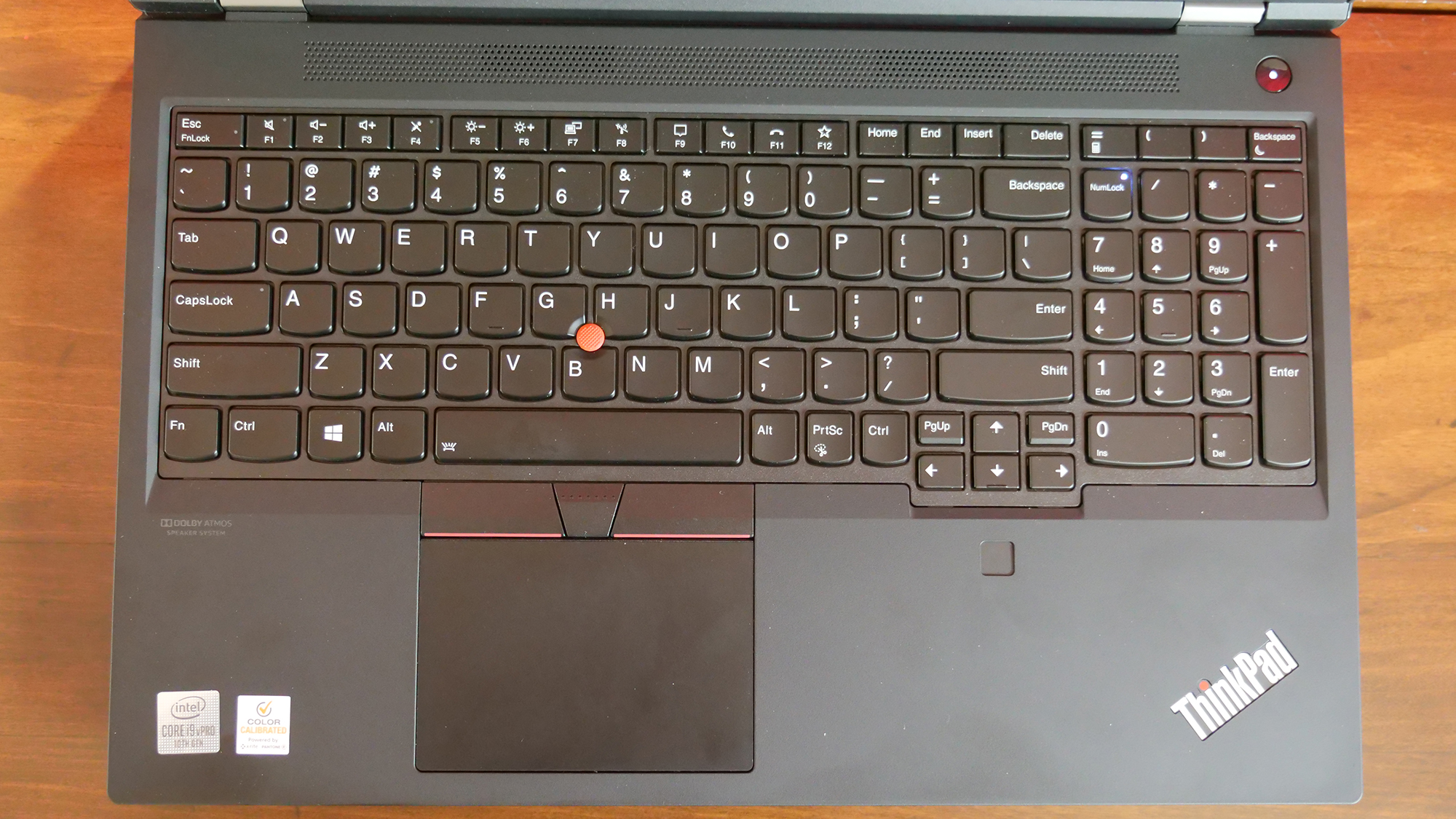
Lenovo ThinkPad P15 audio
The Lenovo ThinkPad P15 has top-firing speakers that get impressively loud. They easily filled my 18 by 12-foot listening space. However, even by laptop standards, the speakers fail to deliver basically any bass.
I listened to “Everything We Need” by A Day To Remember, which ended up playing into the strengths of the Lenovo ThinkPad P15’s speakers. The vocals and guitar came through clear and crisp without distortion even at full volume. However, jumping over to a pair of wireless headphones revealed a punch from the percussion in the background that I was missing on the ThinkPad P15.
Lenovo ThinkPad P15 performance
The Intel Core i9-10885H processor coupled with 32GB of RAM and an Nvidia Quadro RTX 5000 Max-Q GPU will eviscerate any normal task that you can come up with for this laptop. After loading up 40 Google Chrome tabs, including five YouTube videos running at 1080p and a trio of Twitch streams, the laptop didn’t skip a beat or drop a frame. Of course, the Lenovo ThinkPad P15 is meant for far more taxing computing tasks and for that, we set it loose on our many varied benchmarking tests.
The ThinkPad P15 absolutely tore through the Geekbench 5.3 overall performance test, with a multi-core score of 7,784. This placed it ahead of all of its competitors, like the MSI WS66 10TMT (6,735, Core i9-10980HK), the Asus ProArt StudioBook 15 (6,076, Core i7 9750H) and the MSI WS65 9TM (5,573, Core i7-9750H).
Its success carried over to our real-world Handbrake video transcoding test, which requires the laptop to convert a 4K video to 1080p resolution. The ThinkPad P15 completed the task in 7 minutes and 36 seconds. That was nearly a full minute ahead of the MSI WS66 10TMT (8:28) and over three minutes faster than the Asus ProArt StudioBook 15 (10:25) and the MSI WS65 9TM (10:35).
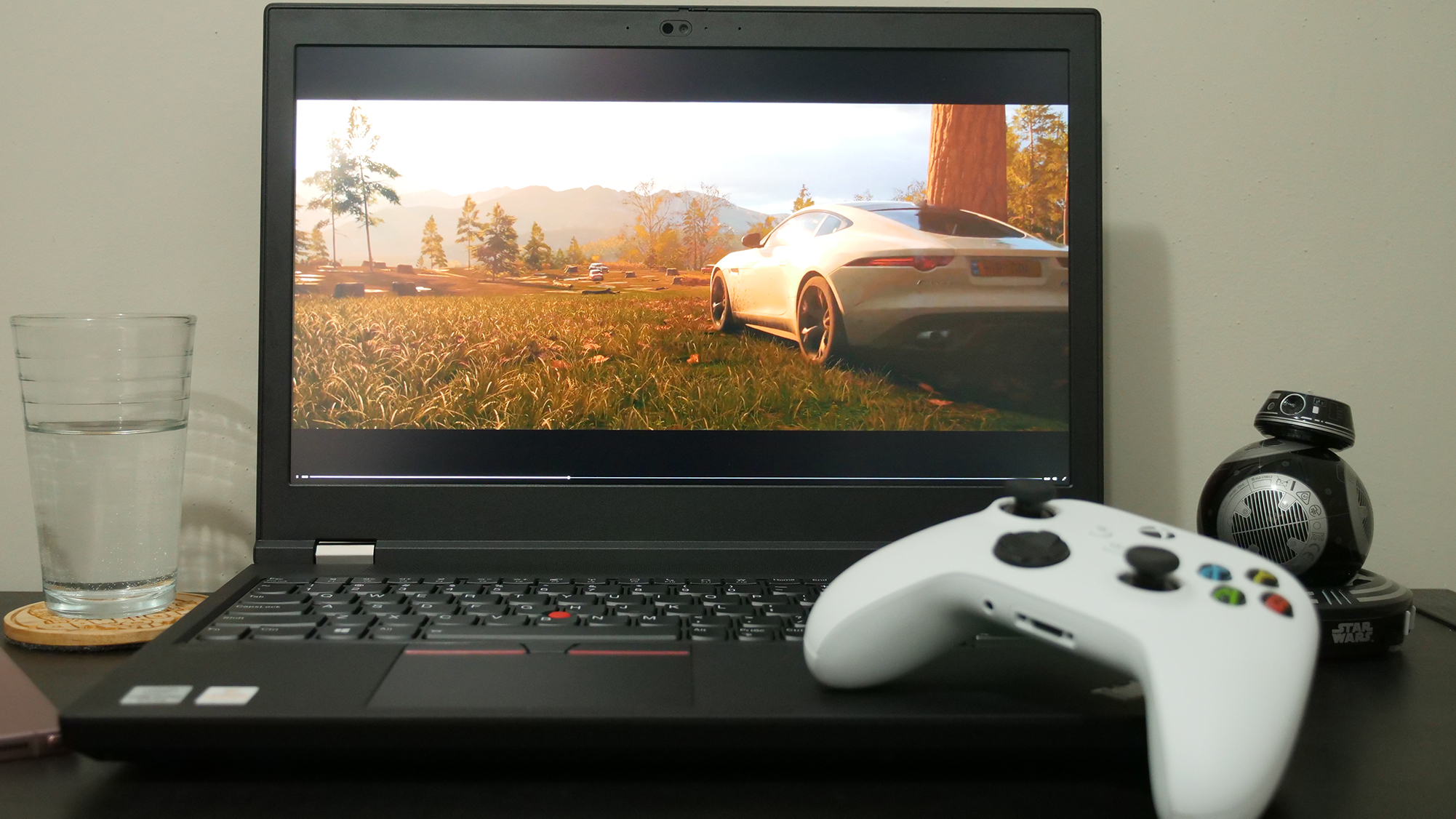
The Lenovo ThinkPad P15’s 1TB SSD did well, managing a 924 MBps transfer rate in our 5GB file transfer test, but this was behind the MSI WS66 10TMT (1,254 MBps, 1TB NVMe SSD). It was still good enough to best the category average of 807 MBps as well as its other competitors, the MSI WS65 9TM (727 MBps, 512GB PCIe SSD) and the Asus ProArt StudioBook 15 (628, 512GB PCIe NVMe SSD).
Lenovo ThinkPad P15 graphics
The Lenovo ThinkPad P15 features the top-of-the-line Nvidia Quadro RTX 5000 Max-Q GPU with 16GB of VRAM, which absolutely crushed the 3DMark Fire Strike synthetic graphics benchmark with a score of 17,296. That was enough to top the charts against its opponents, the MSI WS66 10TMT (16,788, Quadro RTX 5000), the WS65 9TM (15,364, Quadro RTX 5000) and the Asus ProArt StudioBook 15 (13,767, GeForce RTX 2060).
Obviously, if gaming is your primary goal, one of the best gaming laptops is going to deliver a better price-to-performance ratio, but if you just want to do some gaming in your downtime with the Lenovo ThinkPad P15, it is more than up to the task. The Lenovo ThinkPad P15 churned out 93 frames per second on Sid Meier’s Civilization VI: Gathering Storm in 4K, tripling our 30-fps playability threshold.
Lenovo ThinkPad P15 battery life
There is some expectation with a workstation that all that power will yield less than stellar battery life and my Lenovo ThinkPad P15 review unit adds a 4K UHD display into the equation, so it’s unsurprising that its battery life is as bad as it is.
It managed a weak 3 hours and 56 minutes in our battery test, which involves continuous web surfing over Wi-Fi at 150 nits of brightness. Stacked up against other 4K workstations, that runtime is well behind the MSI WS65 9TM (6:57), but slightly ahead of the Asus ProArt StudioBook 15 (3:39).
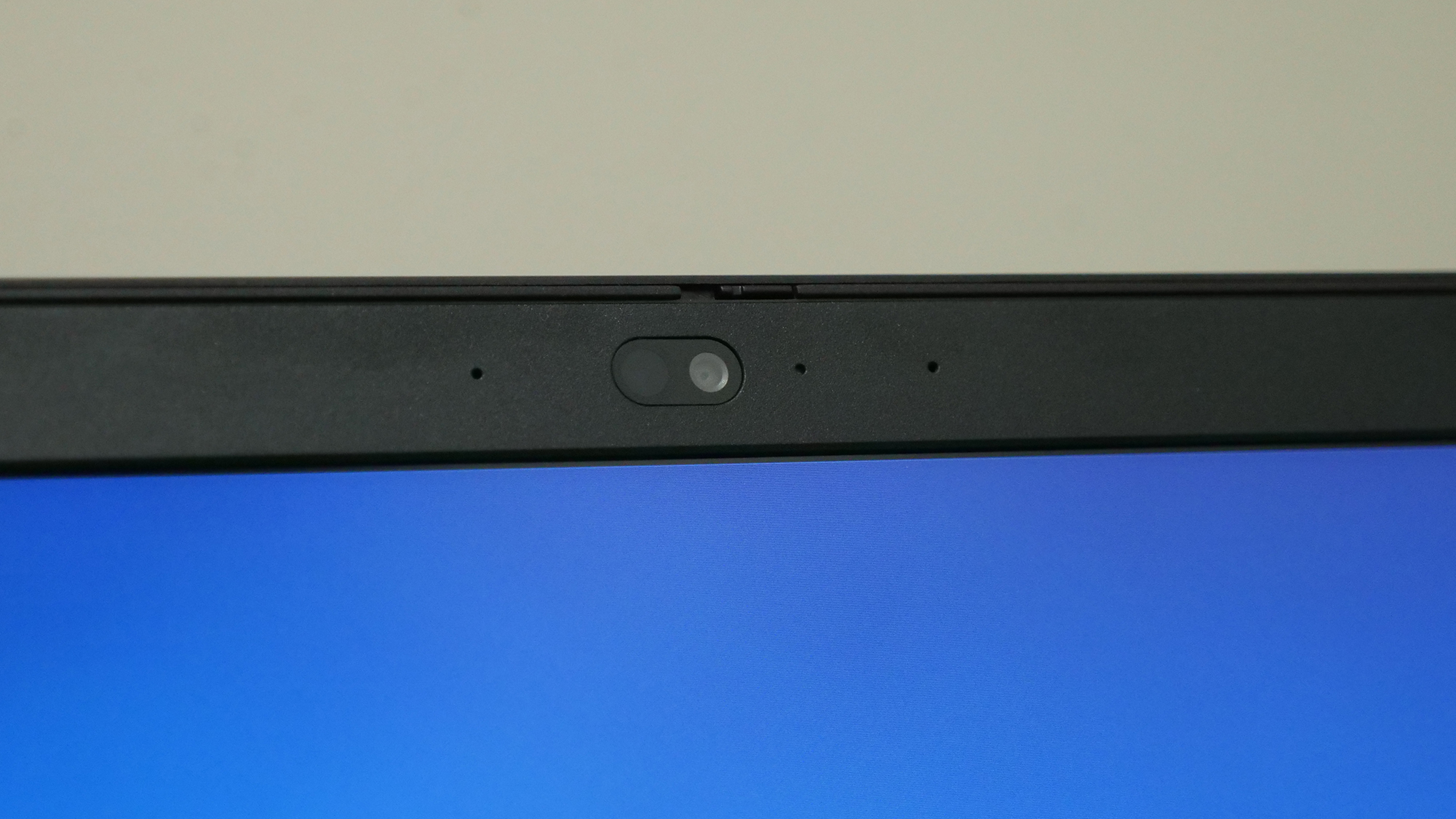
Naturally, the 1080p display of the MSI WS66 10TMT (10:10) gives it a significant edge here. Users are presumably using their workstation plugged in anyway, but if on-the-go use is a factor, you would be wise to go with the 1080p display option on the ThinkPad P15 Gen 1.
Lenovo ThinkPad P15 webcam
The massive bezels on the ThinkPad P15 should have given it plenty of room for a solid webcam. Instead, you have a standard 720p camera that delivers pretty poor results even in good lighting.
Snapping a few selfies in my office where I have solid lighting control, I found a sweet spot where the shooter delivered some detail without being blown out by the light. However, it’s an extremely fine line. Suffice it to say, that if you do a lot of video conferencing or video chat and care about image quality at all, you will want to pick up an external webcam.
We addressed it already in the security section, but it does also have a helpful IR camera for Windows Hello support, so that’s at least a nice touch.
Lenovo ThinkPad P15 heat
The Lenovo ThinkPad P15 has a considerable collection of vents: one on each side, two across the back and roughly half of the underside of the laptop is vented. The fans on the laptop will not let you forget about them, either. They spin up early and often and are quite loud with a bit of a high-pitched whine when going full blast. Fortunately, all of these heat dissipation efforts are successful.

In our testing, which involves playing a 15-minute, 1080p video and then taking temperature readings on various parts of the laptop, no part of the laptop you are in contact with went over our 95 degrees Fahrenheit threshold. The touchpad was a reasonable 81 degrees, the keyboard was slightly hotter at 89 degrees, and the underside was just a tick hotter at 90 degrees.
Lenovo ThinkPad P15 software and warranty
The Lenovo ThinkPad P15 ships with Windows 10 Pro and is blessedly free of almost any bloatware. Given the price and the intended audience for this laptop, you would hope that’s the case, but I’ve been surprised before.
Lenovo Commercial Vantage is the primary system management tool that comes pre-installed on the ThinkPad P15. It gives you a quick glanceable system health dashboard and monitors for any necessary updates to your system. This includes BIOS and Lenovo specific updates as well as general Windows 10 updates. You can also enable Lenovo Wi-Fi Security from Commercial Vantage which will analyze your network for any security threats in real-time.
Lenovo also includes a couple of smaller utilities, Lenovo Quick Clean and Lenovo Performance Tuner. The first is to disable everything on the laptop to allow it to be physically cleaned, this is largely for medical applications. Performance Tuner gives you a dashboard with current system performance and can be used to optimize for specific applications.
Commercial Vantage also displays your current warranty status with links to help you take advantage of or upgrade your warranty. The Lenovo ThinkPad P15 comes with a three-year limited warranty. You can see how Lenovo fares in general on this front in our Tech Support Showdown and Best and Worst Brands special reports.
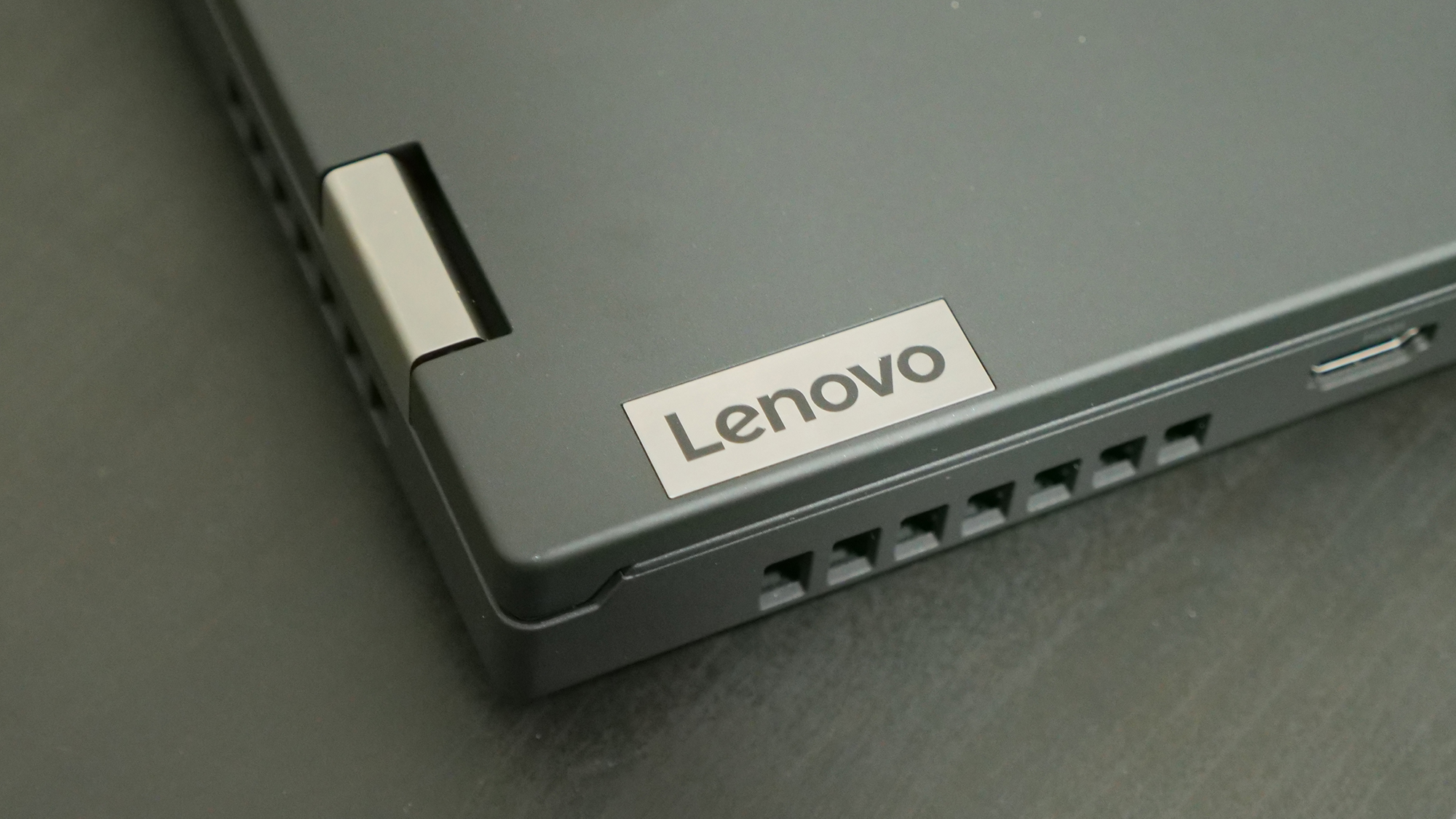
Bottom line
The Lenovo ThinkPad P15 is a remarkable laptop in many regards. Its virtually unmatched performance can handle any conceivable task you could throw at it. But it has a few clear misses that make it a less compelling option for some users.
The sheer size and weight, at over 6 pounds and 1.2 inches thick, means the P15 shouldn’t be the first choice for anyone who regularly needs to pack their workstation in a laptop bag. These same users would probably want to skip the 4K model due to the limited battery life. Finally, the fan noise is oppressive at times, and can be annoying if you can’t wear headphones while you work.
With all of that said, if you need this level of performance and simply need to occasionally move the laptop from location to location, it is an absolute joy to try to challenge this hardware. The screen is bright enough to handle virtually any environment and the keyboard is a pleasure to type on. The extensive selection of ports should keep your desk dongle free and the durable build means that you can feel confident that it will hold up to the rigors of use for years to come.
Sean Riley has been covering tech professionally for over a decade now. Most of that time was as a freelancer covering varied topics including phones, wearables, tablets, smart home devices, laptops, AR, VR, mobile payments, fintech, and more. Sean is the resident mobile expert at Laptop Mag, specializing in phones and wearables, you'll find plenty of news, reviews, how-to, and opinion pieces on these subjects from him here. But Laptop Mag has also proven a perfect fit for that broad range of interests with reviews and news on the latest laptops, VR games, and computer accessories along with coverage on everything from NFTs to cybersecurity and more.
